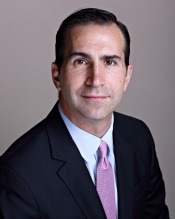High-frequency trading firms and other low-latency traders are expanding their trading strategies and the geographic regions where they trade in order to maintain profits as the U.S. equities market becomes more challenging, one agency broker executive said.

Given the U.S. equity market backdrop of lower volatility, declining volume and narrow spreads, rapid-fire traders are expanding into other asset classes and geographic regions to grow profits, according to Joe Gawronski, president and chief operating officer of Rosenblatt Securities. He made his remarks during a speech last Thursday at the TradeTech conference in New York City.
Citing internal data, he said that HFTs’ U.S. equities profits were down in 2011 to about $1-2 billion, which is down big from their 2008 heyday of as much as $4.49 billion. Also, HFTs now make less per trade than in 2008-today they make on average between $.0005 and $.00075 per share on each trade versus $.001 and $.0015 a few years ago..
"After ten years, the HFT business model is maturing," Gawronski said.
Rosenblatt defines HFT broadly as any strategy that requires very low latency/high capacity technology, makes very small profits per share and trades very large volumes. The firm includes the activity of the designated market makers on the NYSE floor and the upstairs supplemental liquidity providers on NYSE in its HFT figures given the similar automated market making and risk management techniques employed. The same goes for market makers that fill the majority of retail orders as principal trades made off-exchange.
What is not HFT-and at times still gets confused with it, are institutional algos provided by the sellside, which nearly everyone uses. Rosenblatt said when algos place or cancel an order, they do not do it hundreds or thousands of times in mere seconds or sub-seconds, like an HFT typically does.
In order to continue to grow, HFT firms Gawronski said, are searching for new ways to interact with quality order flow, such as setting up their own off-exchange destinations to trade and even becoming designated market makers.
So where else are HFTs going to find new opportunities? Several countries are ripe, Gawronski told Traders Magazine. "I would say some of the emerging geographies of interest are ones you’d expect like Brazil and Russia, but some might comes as a surprise such as Turkey and Israel," he said. "And some players are yet to even fully deploy in developed markets like Canada and Europe which have seen a similar evolution of trading to the U.S. over the past few years."
And the flow is no longer limited to just equities, he added. Alternative asset classes, such as foreign exchange or fixed-income products, make sense.
"Forex and fixed income broadly speaking are of great interest and folks continue to try to figure out how to play in options as well," he said. Options, he added, tend to be a challenge for the HFTs because of the differences in liquidity relative to U.S. equities, which means they require on average longer holding periods and thus greater risk tolerance than HFTs are used to in equities.
HFTs are also engaging in other new activities, such as recruiting talent from banks and other financial institutions and not just computer programmers. They are tapping former regulators and other high-profile public service people for staff and board positions. Both staffing initiatives are helping raise their profile among the regulators and government and may promote a better image than their current one, Gawronski said.
Also in order to grow, HFTs are beginning to accept alternative sources of funding such as private equity capital. Rosenblatt says that at least 10 HFT firms he knows of have accepted such capital already and that an initial public offering by one "is not inconceivable."
Lastly, Gawronski said the sector is ripe for mergers and acquisitions where economies of scale can be exploited. He cited examples where Virtu Financial has merged with global trading firm Madison Tyler, GETCO bought U.K.-based foreign exchange specialist Automat and the recent acquisition of Endeavor Trading, a firm that focuses on fixed-income securities, by Sun Trading. He expects more strategic alliances in the future.
"Amid shrinking profit margins, HFTs are pursuing diversification and alternatives to interact with higher quality order flow," Gawronski said. "They are also scaling through M&A and private equity capital and professionalizing like never before as well to face the new market realties and take advantage of opportunities."





